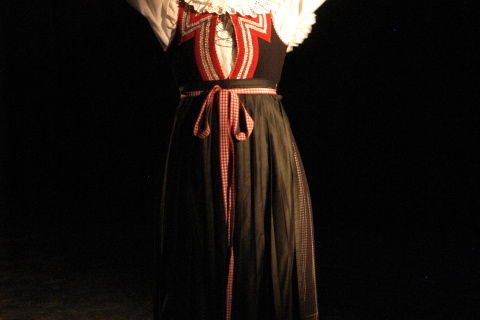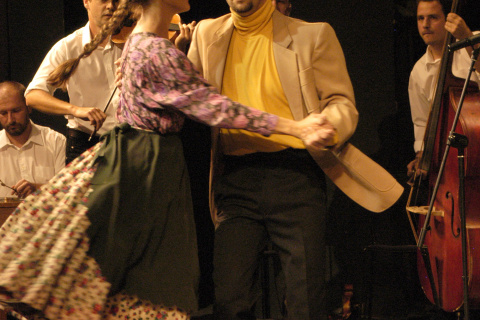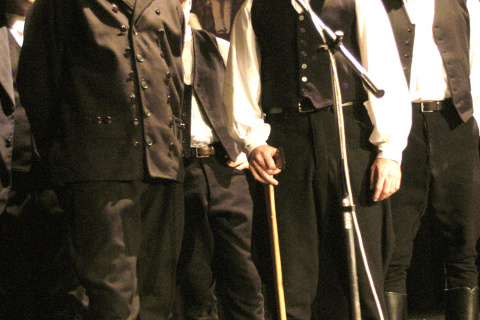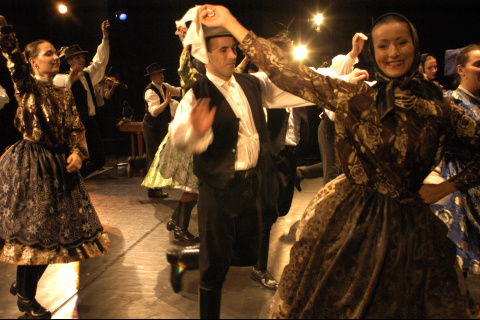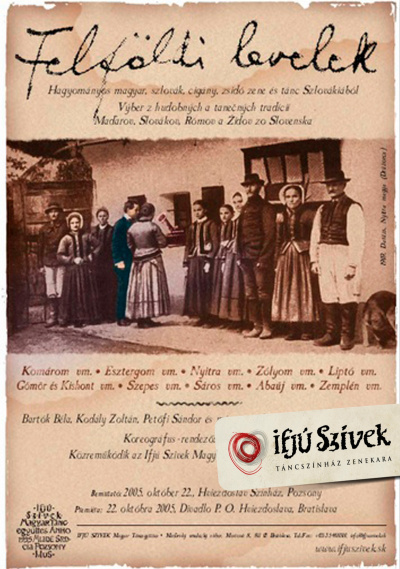
Felföldi levelek (Letters from the Highlands) is a full evening performance created in 2005 by Ifju Szivek Dance Theatre. It was premiered at the Hviezdoslav Theatre in Bratislava 2005 the same year that the group celebrated their 50th anniversary.
The performance incorporates writings by Béla Bartók, Zoltán Kodály, Sándor Petőfi and Sándor Márai and presents the dance and music culture of the area that was historically northern Hungary and is now southern Slovakia. Dusán Hégli looks through the eyes of those mentioned above, (composers/music collectors, poet and writer) at the turn of the century and early twentieth century. In the readings from their letters and works the authors narrate stories of travelling and collecting in the area and relate their feelings towards the area itself and its people.
“I have always been careful that we not only perform a dance, but that we understand each region, its countryside and dance. A performance becomes believable when we not only make the dance our own, but also understand where the dance comes from, its time and surroundings. That is how I was lead to Zoltán Kodály's diary and read about his collecting of traditional music in the regions of Nyitra and Gömör. This was so interesting that I decided to find everything I could in print about the villages of Felföld (Southern Slovakia), the people, songs, countryside and traditions seen through the eyes of different famous Hungarians. In 1909 Bartók (composer) travelled to Southern Slovakia to collect traditional music and songs and put his discoveries and observations to paper. In 1845 Petőfi (poet) travelled all over Felföld and kept a travel diary of his routes, experiences and stories. The essays and writings of Márai (writer) are thought provoking and enchanting as well. The idea of Felföldi levelek is to conjure up the times and atmosphere of the time when these dances were danced in the villages. We believe that through this performance we can present not only a colourful, but also a personal picture of Felföld at the time.” (Dusán Hégli – artistic director) (Péter Kaszás: Felföldi levelek. Magyar Nemzet newspaper, .07.17.2005)
The performance includes Hungarian, Slovak, Gypsy and Jewish music and dance giving an authentic reflection of the ethnic make up of the region at the time. We look at Felföld from a geographical and dance history viewpoint with equal interest and importance given to each different ethnic dance culture and their commonality. The reason for the differences between the particular dance types cannot be explained with their ethnic origin. For example csárdás and verbunk, fashionable after the Christian reform, became widespread in Southern Slovakia amongst the Hungarian community, but the more ancient types - ugrós, eszközös, fegyver or forgatós dances - remained in the mostly Slovak populated northern regions, due to their remote location from the centre of fashion trends.
This production is not only an illustration through letters and dance, but the thought that has gone into it, the music, dance, costume and staging all combine to strengthen the structure and create a truly mature performance!

